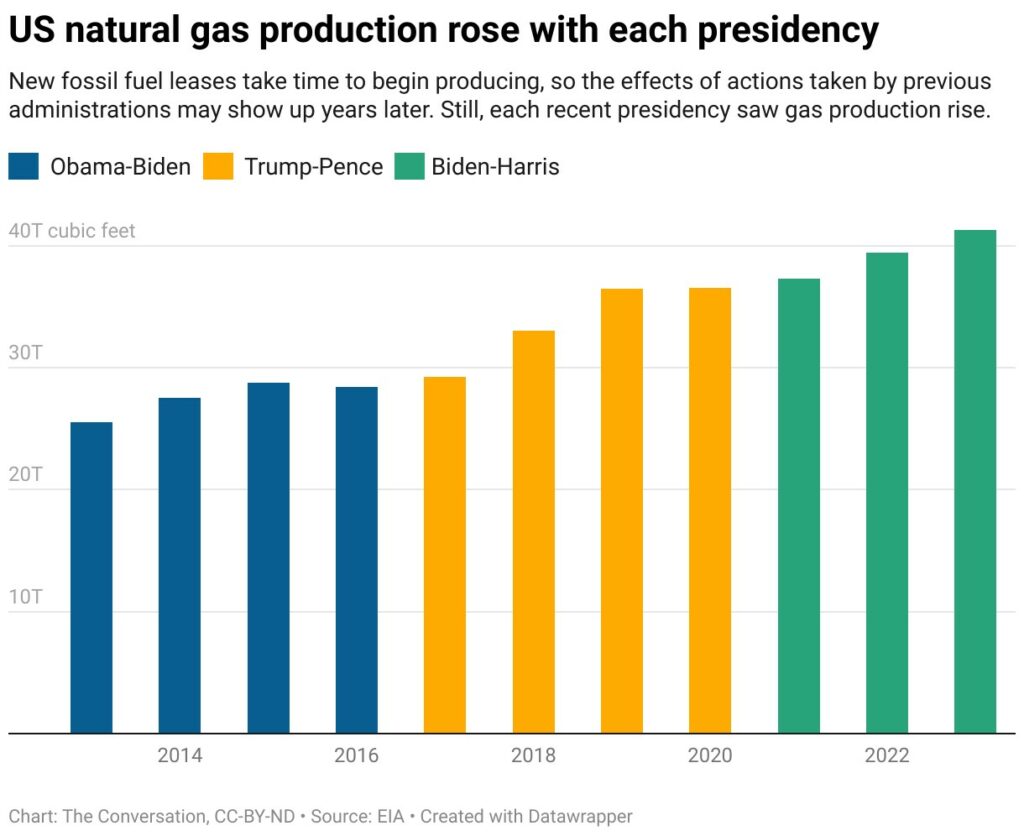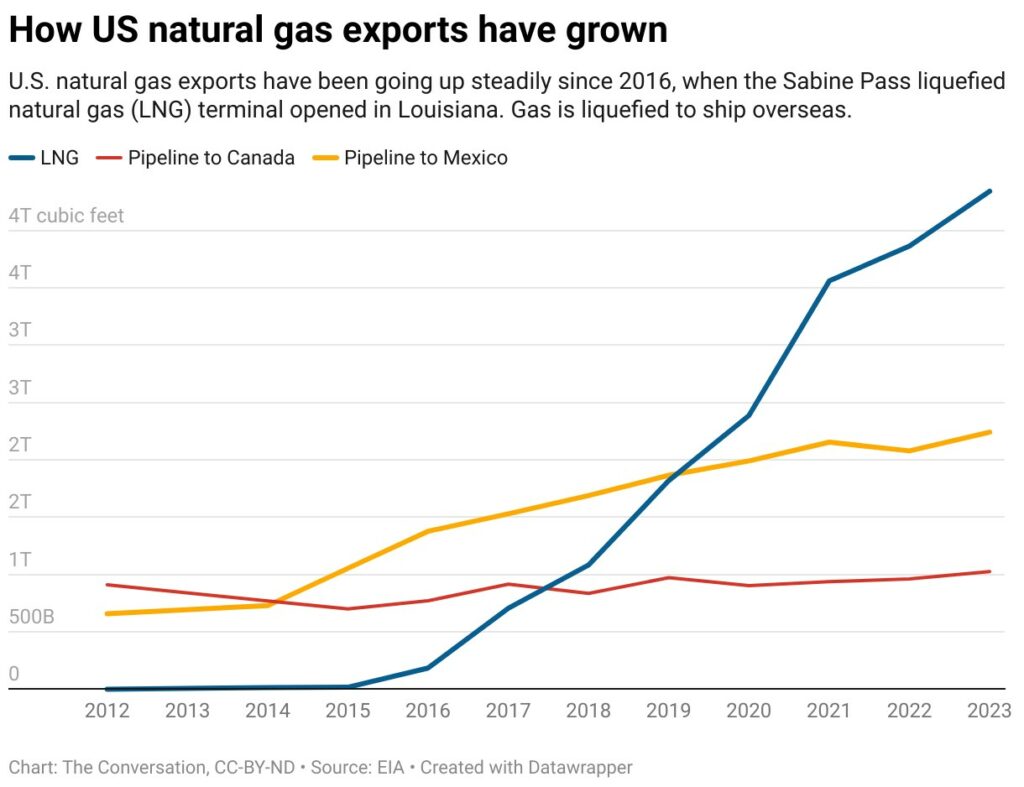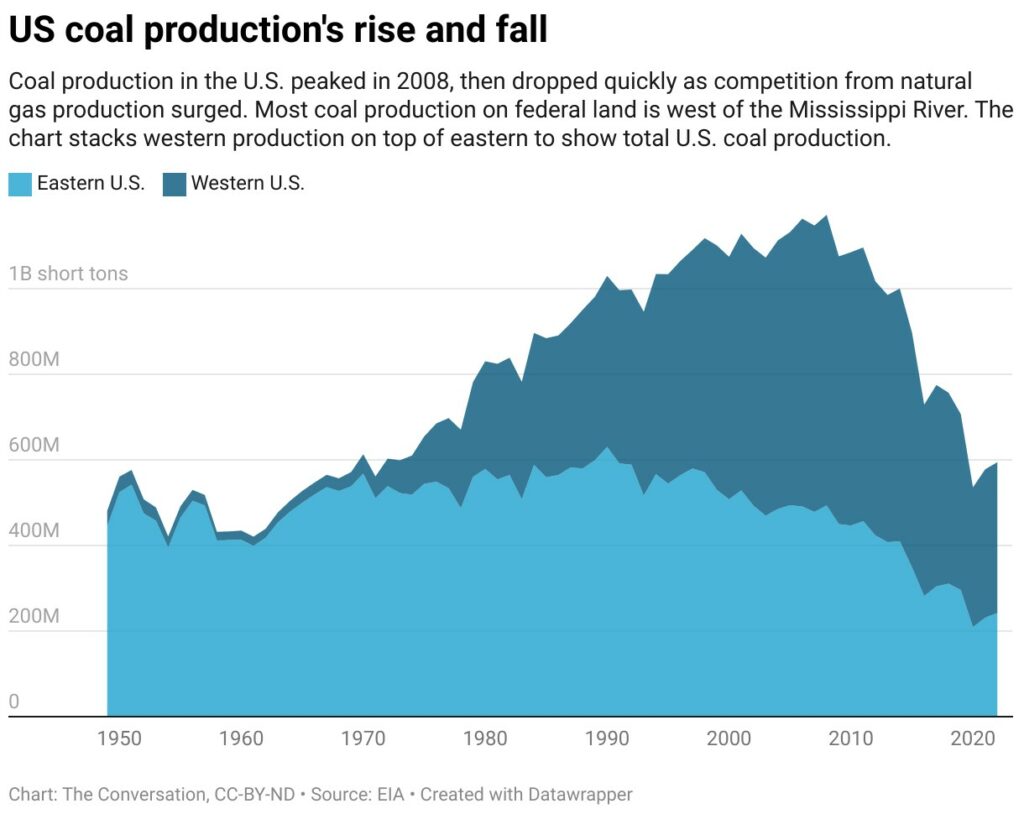When you read this, pay attention to who is funding who for the presidency. It is surprising and it is not surprising. We have heard this person who longs to be a president again and people still support this person? The energy companies backing are profit and control mongers. They see an opportunity and they are preparing for when and if Trump becomes President. Under a President Kamala Harris, they would still be profitable. They would also be accountable which they do not want. They are willing to sacrifice the country and its citizens for this for the greater freedom under a Trump presidency. Many of these companies already have the executive orders written for when Trump takes office.. ~~~~~~~ The United States is producing more
Topics:
Angry Bear considers the following as important: climate change, Oil and Natural Gas, US/Global Economics
This could be interesting, too:
Joel Eissenberg writes How Tesla makes money
Angry Bear writes True pricing: effects on competition
Angry Bear writes The paradox of economic competition
Angry Bear writes USMAC Exempts Certain Items Coming out of Mexico and Canada
When you read this, pay attention to who is funding who for the presidency. It is surprising and it is not surprising. We have heard this person who longs to be a president again and people still support this person? The energy companies backing are profit and control mongers. They see an opportunity and they are preparing for when and if Trump becomes President.
Under a President Kamala Harris, they would still be profitable. They would also be accountable which they do not want. They are willing to sacrifice the country and its citizens for this for the greater freedom under a Trump presidency.
Many of these companies already have the executive orders written for when Trump takes office..
~~~~~~~
The United States is producing more oil and natural gas today than ever before. So, what roles did the Trump-Pence and Biden-Harris administrations play in this surge?
The answer could surprise you, given the way each has talked publicly about fossil fuels. But why would you be surprised? Former President Donald Trump was embracing them and talks about it. In fact, Trump boasts about it and also the large crowds showing up to hear his speeches. ? On the other side, President Joe Biden and Vice President Kamala Harris are focusing on the reduction of fossil fuel usage to fight climate change.
In any case some data. Under each of the three most recent presidencies, (Republican and Democratic) U.S. oil and gas production was higher at the end of each administration’s term than at the beginning.
Such production has both pros and cons. Together, oil and natural gas account for nearly three-quarters of U.S. energy consumption. Producing oil and natural gas in the U.S. provides energy security. Higher production generally keeps prices down or it is supposed to do so. However, using oil and natural gas releases carbon dioxide into the air and contributes to climate change. Natural gas is mostly methane, another potent greenhouse gas.
Under both Trump and Biden-Harris, US oil and gas production surged to record highs, despite very different energy goals
Choices in one administration affect the next
When land is leased for drilling, it takes some years for production to begin. So, the increased oil and gas production during the Biden administration is to some extent a result of leases issued during the Trump administration. Trump auctioned off the leases; the Biden administration signed the permits.
In many cases, presidents have little discretion and are essentially required to approve when permits meet the legal requirements.
Global events can also have large effects on production.
The COVID-19 pandemic reduced U.S. oil demand as activity slowed worldwide in 2020.
Russia’s invasion of Ukraine in 2022 led to greater energy demand from Europe. Natural gas has to be liquefied to ship it overseas, however, and the U.S. has limited export capacity. To send more supply to Europe, the U.S. had to reroute natural gas exports intended for other countries.
The Biden-Harris administration paused approvals for additional liquefied natural gas terminals in 2024, but a federal judge blocked the move.
What caused oil production to surge?
Drilling technology has been an important driver of the industry’s success.
U.S. oil production had reached a peak in 1970 and went into a slow decline that lasted more than three decades. It was widely believed that the U.S. had pumped its best reservoirs and that the country would be inexorably dependent on foreign oil.
Then, in the early 2000s, innovations in hydraulic fracturing and horizontal drilling changed everything. These techniques gave drillers access to previously hard-to-reach fossil fuels and opened up opportunities for oil and gas drilling at lower cost and in greater quantities. Since around 2009, U.S. oil production has surged.
Natural gas followed a similar trajectory.
What about coal?
U.S. coal production is a different story. It peaked in 2008 and has been going down sharply since then.
Coal is more susceptible to government actions than oil and gas – 40% of it is produced on federal land, compared with 24% for oil and 11% for natural gas. And it has seen federal policy swings.
For example, in 2016, then-President Barack Obama banned new coal-mining leases in the Powder River Basin in Montana and Wyoming, where the majority of coal production on federal land takes place. The Trump administration lifted that freeze a year later, but a court ordered a pause of Trump’s move. The ban was eventually revoked by a court during the Biden administration. Then the Biden administration again ended new leases in the Powder River Basin.
But coal’s decline was also about economics. As natural gas became cheaper, it increasingly replaced coal in U.S. electricity production.
The decrease in coal production is the main reason U.S. carbon dioxide emissions have been falling even as fossil fuel production rises. Rising renewable energy production and increasing efficiency in some technologies have also helped cut emissions.
The bottom line
Trump can take credit for allowing more leases for oil and gas drilling. The Biden-Harris administration, while it issued permits for oil and gas drilling and production increased on its watch, established several rules to limit greenhouse gas emissions from fossil fuels.
Presidents’ actions can matter for the industry’s future, but the major factors in U.S. oil and gas production so far have been increased production efficiency, increased global demand, and the lower cost of natural gas as compared with coal.
Because Trump can be manipulated by feeding his ego, the energy companies are funding him biggly as compared to Harris.






